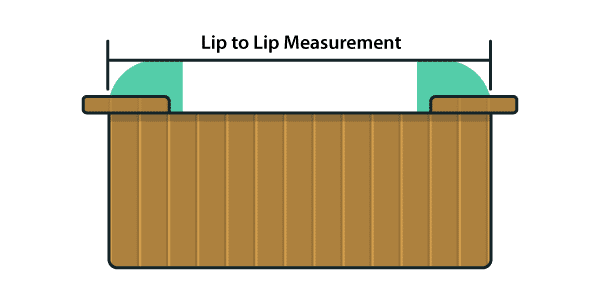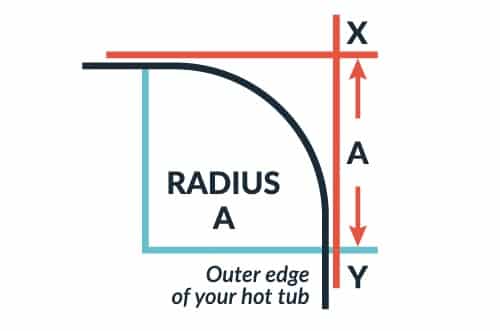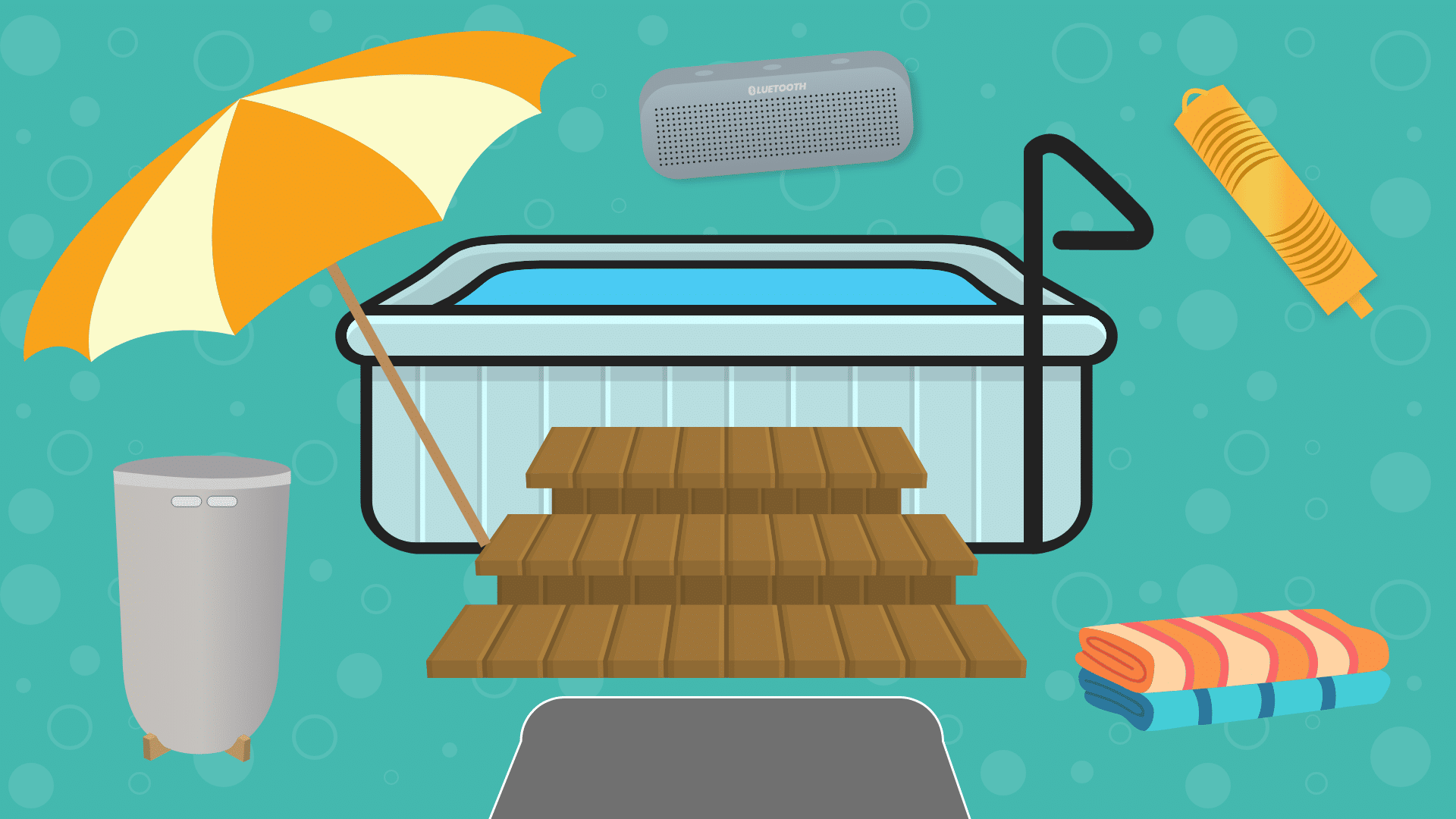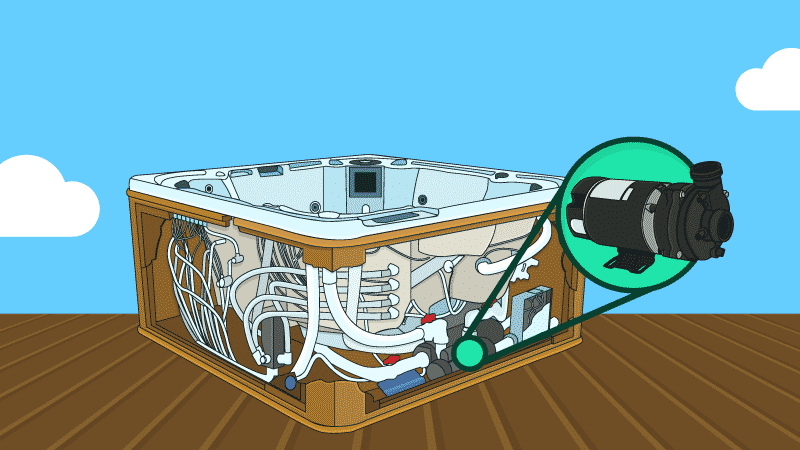How to Measure Hot Tub Cover Dimensions Accurately
Choosing a new hot tub cover? It’s more than just aesthetics – it’s about precision. Dive in as we break down the simple steps to get accurate measurements. No guesswork, just results.
You’ll learn how hot tub covers are made and what to look for when you buy one. Plus, we’ll show you how to measure your hot tub or existing cover so you can order a new spa cover that’ll fit like a glove.
Measurement Tools You’ll Need:
- Measuring tape (tape measure)
- Carpenter Square
Learn how to keep your hot tub clear while saving money so you can enjoy more soaking time without big costs. The Hot Tub Handbook covers every type of hot tub on earth.
5 Measurements You Need to Make For The Perfect Cover Fit
You can’t be sure a hot tub cover will fit without first measuring your hot tub. We’re all familiar with how rulers work, so figuring out the correct hot tub cover measurements should be a breeze.
Even if your spa is a perfect square, the corners are probably rounded. And not every spa has the same size curve on those rounded corners.
Note: If you already own a hot tub cover, you may take these measurements with it on your spa. Just don’t add extra inches where noted. Now is not the time to cut corners. Measure twice, order once.
To measure hot tub corners, you can use a framing square (an L-shaped ruler), two rulers held together at their zero ends, or a printable diagram offered by some retailers. The easiest, most accurate choice is the framing square.
This tool features gradations for marking various rafters, eliminating the need for manual calculations with its inclusive guidebook. Combining the functions of five essential tools, it's a must-have for every tradesman, with easy-to-read black gradations on a non-glare finish.
1. Cover Length
Measure across the longest part of your hot tub. Be sure to measure from lip to lip (the acrylic tub) and not the outer edge created by the cabinet. Take this measurement in two spots to be sure the sides are perfectly straight. If the figures are different, use the larger one. If your spa is round or octagonal, simply measure straight across. Add one inch to this measurement to give your cover half an inch of give on both sides.

2. Cover Width
Measure across the shorter side of your tub. Again, measure lip to lip only (the acrylic tub), not the outer cabinet edge. You may also take this measurement in two spots to ensure consistency in width. Add one inch to this measurement to give your cover half an inch of give on both sides. If your spa is octagonal, measure one panel from point to point.
3. Radius Corner
Place the carpenter square (or two rulers) against the corner of the hot tub cover or hot tub shell. The points where your hot tub touches the ruler are the corner cover radius measurement.
If you need to round this figure, be sure to round it down. Because the square actually measures the space around the corner. A smaller number means a larger corner radius in your cover, which means it’ll fit your spa better.

How do you measure a hot tub cover corner?
Corners can be tricky. You need to find the radius of the curve. That’s done by taking a piece of paper or cardboard, placing it over the corner, and tracing the edge of the curve. Cut that out and measure the straight line from where the curve starts to the point of the paper. That’s your corner radius.
4. Cover Skirt Length
The skirt is a flap that extends from the bottom edge of the hot tub cover. The skirt overhang must be long enough to help the cover seal well but not so long it bunches up and creates gaps. To get the right length, measure from the top of your spa down to the bottom of the cabinet. If your spa cabinet has a lip or ledge, measure down from that. If you’re measuring your old cover, start at the seam below the foam, then measure to the bottom of the skirt.
5. Fold Direction
Be sure to note where any digital control panels are so you can choose a cover that folds away from them. This way, you’ll be able to access the controls when you open your hot tub.
Hot tubs with unusual shapes, water features, and built-in sound systems may require you to special order a custom hot tub cover. Sometimes, custom covers require you to create and send a template to the manufacturer to ensure a perfect fit.
Hot Tub Cover Anatomy
Before you make such an important purchase, you should know what you’re getting for your money. What’s underneath that fancy vinyl cover, anyway? How exactly does it provide all those awesome benefits?
Hot tub covers have removable vinyl shells, which zipper open and closed. Most are made up of two sections attached by a hinge between them. Each section contains a solid piece of dense foam.

In outdoor covers, the foam is thicker in the middle (on either side of the hinge), then tapers down to the outer edges to help keep debris from accumulating on and causing damage to the cover. Buying a tapered cover is just one way to protect your spa cover from bad weather.
Before being slipped into the vinyl shell, the foam is wrapped in one or two protective layers of plastic. This is the vapor barrier, and its job is to keep the smaller water particles—the vapor—from reaching the foam.
High-quality covers are reinforced with steel bars near the middle, but some also have multiple bars spaced evenly throughout the foam, making for a sturdier cover. Generally, the cover includes handles and tie-down straps as well.

6 Hot Tub Cover Features the Pros Know (And You Should Too)
When you’re shopping around for an important (and expensive) item, you gotta know the lingo. Knowing what these terms mean for the quality, lifespan, and effectiveness of your hot tub cover can make a big difference in your purchase.
1. Foam Density and Thickness
Hot tub covers are available in one-pound, one-and-a-half-pound, and two-pound densities. The higher the density, the stronger and better at retaining heat your cover will be.
Most cover tapers range in thickness from 4 x 2 inches to 6 x 4 inches. Thicker foam can handle heavier loads and keep in heat more effectively.
2. The R-Value
The Federal Trade Commission regulates how to test for and disclose to customers the heat resistance of foam insulation. However, no one regulates the R-value for hot tub cover foam, so it isn’t consistent across manufacturers. That doesn’t stop some of them from using R-value as a selling point. Just remember density and thickness are better indicators of quality, and take R-value figures with a grain of salt.
3. Marine Grade Vinyl
The shell of your hot tub cover is made from material resistant to constant water exposure. The standard is marine-grade vinyl. However, it varies in quality. It’s graded by its weight per square yard, typically ranging from 26 to 34 ounces. The higher the number, the stronger the vinyl, especially if it’s pre-treated for ultraviolet (UV) and mildew resistance.
4. The C-Channel
A galvanized steel bar running the width of the cover helps reinforce it under heavy loads. It’s resistant to chemical corrosion while providing a little protection for the foam panels, too.
5. Vapor Barrier
The foam core is wrapped in one or two layers of thin plastic film, which helps prevent moisture from soaking into the foam. Typically, it’s sealed around the foam with heat. As your cover ages, the vapor barrier slowly breaks down.
6. Safety Locks
Spa covers come with as many as four locks built in. Some are simple plastic dials, while others lock with a key. If you’ve got small children or you leave your hot tub unattended for a season, safety locks may be an important feature for your cover.
Frequently Asked Questions About Measuring for a Hot Tub Cover
We took the internet’s most popular questions and answered every one of them.
How are hot tub covers measured?
Grab your tape measure because precision is key when sizing up a new hot tub cover. Measure the length and width of your hot tub’s outer dimensions straight across to the opposite side, not along the curve. Don’t forget to measure the skirt length, which is the flap hanging down from the cover, to ensure it’ll cover the tub’s sides properly. The corner radius is the last number you need. Trace the curve of your tub’s corner onto a cardboard cut-out, and measure the straight line from where the curve starts to where it ends.
Does a hot tub cover have to fit exactly?
Absolutely, it does. A snug-fitting hot tub cover prevents heat loss and the debris out, working efficiently to minimize your energy bills. If it’s too small, you’ll be left with gaps. If it’s too big, it might not insulate properly and you’ll lose hot tub water from evaporation.
How much room is needed for a hot tub cover?
Plan for a bit of breathing room around your hot tub, not just for the cover but for the ease of flipping it open and closed. You’ll want a clearance of at least a foot, maybe more, depending on any cover lifting mechanisms you’re using. So, give it space, like you would for any home appliance’s doors or lids.
Can a hot tub cover be too big?
Sure, it can, and that’s just as problematic as too small. A cover that’s too large can be a sloppy energy-waster, failing to provide the tight seal you need. It’s like leaving a window cracked open all winter; you wouldn’t do that, so don’t let your cover be the weak link in your hot tub’s energy efficiency.
Why are hot tub covers so expensive?
Quality demands its price, and a hot tub cover is no exception. They’re beefed up with insulation to keep the heat in, tough materials to withstand the elements, and a design that’s meant to keep your energy costs down. It’s an investment, and when you weigh that against the perks of a well-maintained spa, it’s one worth making.
Can you stand on a hot tub cover?
Unless your cover is designed for it, which most aren’t, standing on a hot tub cover is a no-go. It’s not a diving board or a stage; it’s an insulating piece that can be damaged under too much weight. Treat it with care to extend its life and maintain its purpose.
Is a thicker hot tub cover better?
Thicker can mean better insulation and potentially more energy savings in cooler climates. But there’s a balance to strike; too thick, and it might become a two-person job to move it. Think about your back, the climate, and your utility bill when choosing the thickness.
3 Ways We Can Help With Your Hot Tub
- Hot Tub Cheat Sheets (Free): Easy-to-use guides to help you keep your hot tub water balanced and sanitized.
- The Hot Tub Handbook: An illustrated guide to DIY hot tub care, including water chemistry, maintenance, troubleshooting, and more.
- The Hot Tub Care Course. You’ll get step-by-step videos and a step-by-step downloadable guide with everything you need to know about hot tub maintenance.










